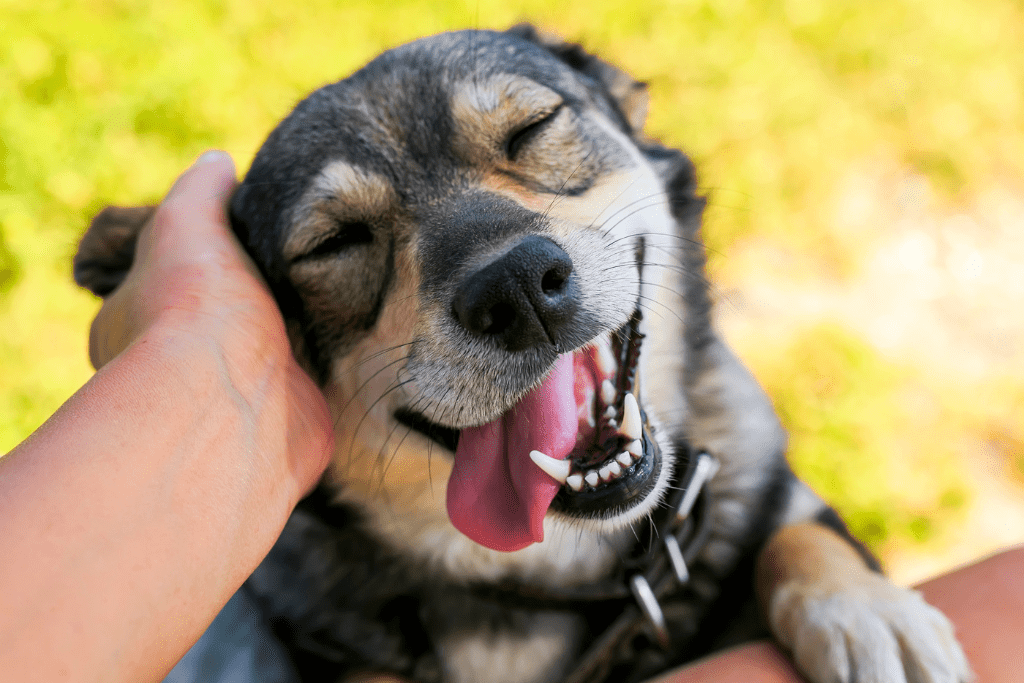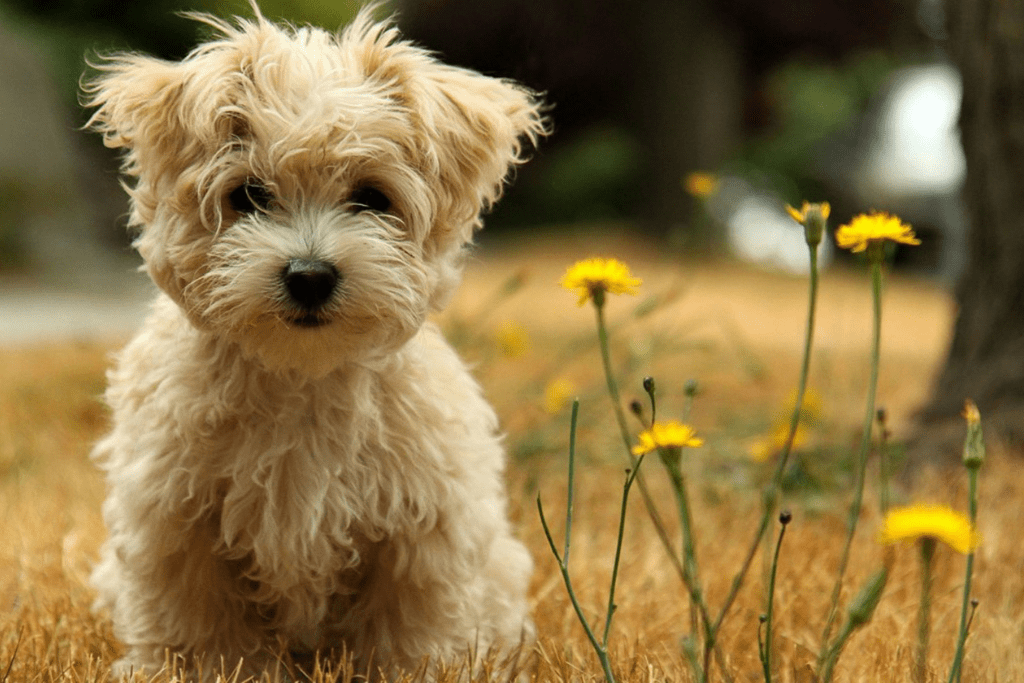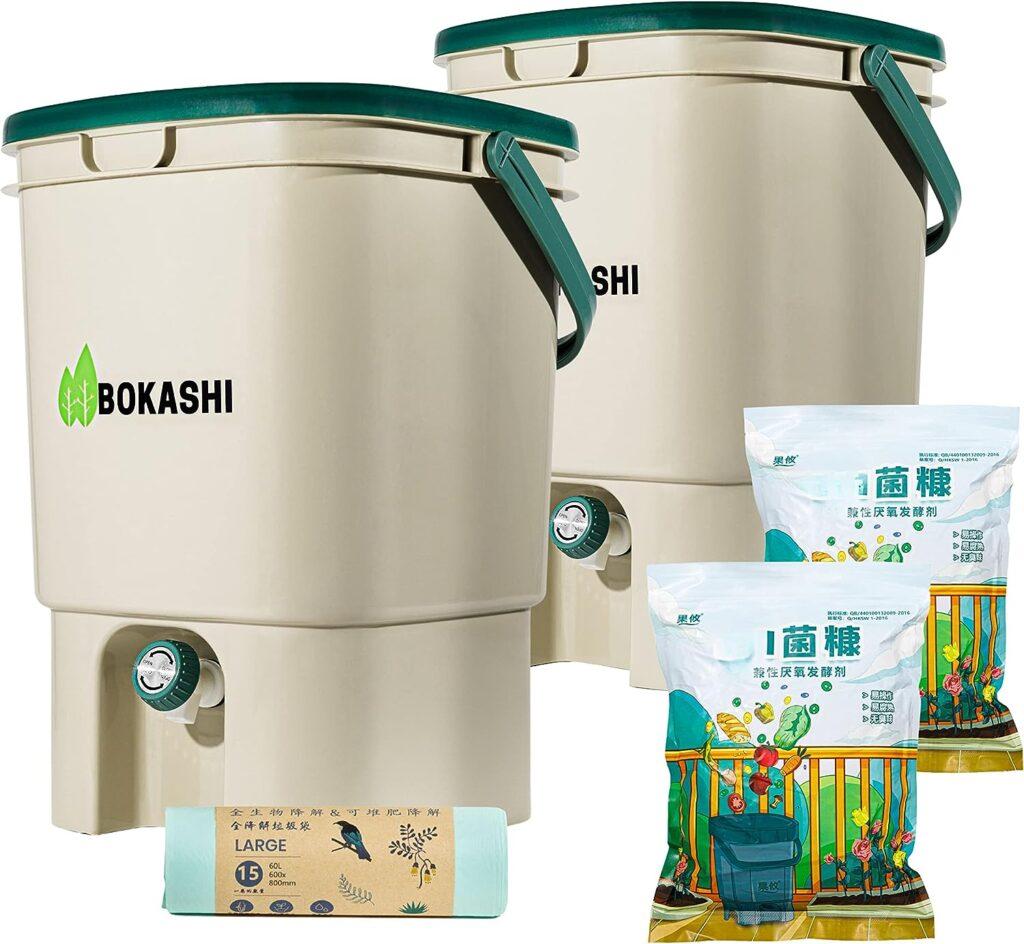It’s time to talk about poop, dog poop, to be precise. How can we turn our dogs’ waste into an eco-friendly and beneficial component for our garden? By learning how to compost dog poop, of course!
Dog lovers, raise your paws if this sounds familiar: you’re enjoying the home garden, the fragrance of blooming flowers, the hum of bees, and then… you step in it. That’s right, the dreaded dog poop. While it’s just a part of life for dog owners, did you know there’s a way to turn this pesky problem into a gardening goldmine?
Instead of using a poop bag to pick up and throw away your dog’s waste, imagine turning it into something useful and earth-friendly. Despite what you may have heard, dog poop is – indeed – compostable. You can’t use a standard compost bin to handle your super-cute puppy’s latest offering. However, composting dog poop creates a valuable resource for your garden while keeping waste out of landfills. This doesn’t just apply to regular compost; even specifically, composting your dog’s waste can be done safely and efficiently.
Whether you’re a first-time composter or a seasoned green-thumbed garden guru, there’s something intriguing about safely composting dog poop. Utilizing tools like the Doggie Dooley Pet-Waste Disposal System or exploring other systems on the market, you can become a part of a growing trend in home and garden sustainability.
And fear not! We’re not just talking about tossing Fido’s waste onto a compost pile and hoping for the best. There are dedicated systems and processes to compost dog waste and compost pet waste in a way that’s safe and beneficial to your garden.
So, grab your gardening gloves and your favorite four-legged friend because we’re about to embark on a journey that could transform your yard, and your relationship with dog ownership, in surprisingly delightful ways. Stay tuned as we dig into the details (not literally, don’t worry) and guide you through this unique modern, eco-friendly living aspect.
There’s a solution waiting in your backyard, and it’s more than just barking up the wrong tree. This article explores the ins and outs of composting your dog’s waste, from the why to the how. This is the read for you if you’re a dog owner interested in environmental stewardship and making the most of waste.
By the end of this guide, you’ll see that even something as mundane as dog waste can be a stepping stone toward a greener, more harmonious home. Let’s turn that poop into plant power!

Why Compost Dog Poop? Understanding the Need and Benefits
Dog waste might not seem like something that can benefit the environment, but through composting, it can become a valuable resource. When dog waste ends up in landfills, it can lead to harmful effects on the ecosystem. Composting dog waste provides a way to reduce the amount of waste and turn it into useful organic material for your garden.
Composting dog poop isn’t just about dealing with waste in an eco-friendly way; it’s about transforming a common nuisance into something valuable for the environment. Here’s why composting dog poop makes sense:
Addressing the Environmental Impacts
Traditional disposal methods of dog waste, such as throwing it in the trash, lead to dog poop ending up in landfills. Here, it doesn’t just decompose harmlessly; it can contribute to methane production, a potent greenhouse gas. It also takes up valuable space that could be used for other non-compostable materials. Composting dog waste, on the other hand, turns it into useful organic material that can enhance soil and support plant growth.
Reduction of Plastic Bag Usage
Many dog owners use plastic bags to pick up and dispose of dog waste. These bags are often not biodegradable and contribute to plastic pollution. By composting, dog owners can reduce their reliance on plastic bags and instead use compostable poo bags or other eco-friendly alternatives.
Creating Useful Organic Material
Dog waste can be transformed into a nutrient-rich material that improves soil structure, fertility, and water retention. While the compost resulting from dog waste should not be used on food crops, it can be applied to ornamental plants and landscapes, adding valuable organic matter to the soil.
Promoting Responsible Pet Ownership
Composting dog waste encourages responsible pet ownership. It fosters an awareness of the environmental impact of dog waste and provides a proactive way to address it. It signals a shift from merely disposing of waste to considering its lifecycle and potential uses.
The Economic Benefits
Composting dog waste at home can save money in the long run. It reduces the need to purchase soil enhancers or fertilizers for non-edible plants. In communities where composting dog waste is practiced widely, it can reduce the strain on waste management services, potentially lowering costs.
Health Considerations
Dog waste can contain parasites and pathogens. By composting it correctly, these harmful organisms are eliminated, reducing the risk of them contaminating water sources or other environmental areas. Composting is a way to manage dog waste hygienically and protect public health.
What Is Compost? The Basics of Composting and Regular Compost
Compost is the result of decomposing organic waste into a rich soil-like material. While regular compost typically includes food scraps and yard waste, composting dog poop requires additional care. Dog waste contains parasites and pathogens that need to be eliminated during the composting process. A specific composter designed to handle pet waste ensures that the compost pile gets hot enough to kill these harmful organisms, making it safe to use.

How to Choose the Right Composting Bin for Dog Waste?
When composting your dog’s waste, the right bin is essential. Compost bins for dog waste are designed to handle the decomposition process and safely compost the material. Look for bins that support high levels of carbon and pair your dog’s waste with carbon-rich materials like sawdust. A good compost bin can help dog owners handle the waste responsibly.
Another innovative and practical option for handling dog waste is the use of in-ground dog waste disposal and composting systems. These systems are designed to break down solid dog waste into a ground-absorbable liquid, naturally integrating it into the soil. They can be easily installed in a backyard or garden area and work by utilizing enzymes and natural processes to liquefy the waste.

Image: Doggie Dooley 3000 Septic-Tank-Style Pet-Waste Disposal System
This method doesn’t produce compost that you’d use in your garden, but it offers a tidy and environmentally responsible way to handle dog waste right on your property. For those looking to minimize physical handling of the waste and bypass the compost pile entirely, this solution offers a clean and efficient alternative.
Using Bokashi to Compost Pet Waste: A New Trend in Waste Management
Bokashi composting is a fermentation process that is gaining traction in the pet waste management field. Unlike traditional composting methods, Bokashi doesn’t rely on aerobic bacteria. Instead, it uses a mix of microorganisms that anaerobically break down organic material, making it a suitable method to compost pet waste, including dog and cat waste. Here’s an exploration of how Bokashi functions and why it’s a favorable option for pet owners.
The Bokashi Method Explained
Bokashi composting uses a mixture called Bokashi bran, which consists of wheat bran, molasses, and Effective Microorganisms (EM) like lactic acid bacteria, yeast, and phototrophic bacteria. The mixture is fermented and then dried to create a powerful composting agent.
Pet waste is layered with this bran in a Bokashi bucket, which is sealed airtight. The microorganisms break down the waste without the unpleasant odors that often accompany traditional composting methods. The process typically takes two to four weeks.

Benefits of Using Bokashi for Pet Waste
- Efficiency: Bokashi breaks down pet waste quickly and can handle all types of pet waste, including bones and meat, which are typically hard to compost.
- Odor Control: Since it’s an anaerobic process, the unpleasant smells often associated with composting pet waste are minimized.
- Space-Saving: Bokashi bins are compact and can be kept indoors, making them suitable for those with limited outdoor space.
- Environmental Impact: By composting pet waste using the Bokashi method, you are keeping these materials out of the landfill, reducing methane emissions, and contributing to soil health when the finished product is used in the garden.
Considerations and Precautions
While Bokashi composting is an excellent method to compost pet waste, there are certain precautions to keep in mind:
- Ensure the use of a quality Bokashi bran, as it is the essential ingredient for this method.
- The resulting compost should be buried in the garden or mixed with traditional compost to complete the breakdown process.
- Avoid using Bokashi compost that has pet waste in vegetable gardens to minimize potential health risks.
- Keep the Bokashi bin sealed to maintain an anaerobic environment.
Using Bokashi to compost pet waste offers an efficient, odor-controlled, and space-saving method that can be adopted by pet owners regardless of their living arrangements. Its unique anaerobic process and utilization of Effective Microorganisms set it apart from traditional composting methods. Those looking to responsibly dispose of pet waste while reaping benefits for the soil may find Bokashi an attractive option. It adds a touch of science to the art of composting, transforming waste into a valuable garden resource.
How to Prepare to Compost Your Dog’s Poop: Steps and Tools Needed
Ready to turn your dog’s poop into compost? Start with the right tools, such as a compostable poo bag, and a designated compost bin or waste disposal system. Balance the waste with carbon-rich materials like sawdust and cover the pile with a tarp to keep it moist. Following these steps, along with regular monitoring, ensures that the composting process transforms your dog’s waste into usable compost.
A Step-by-Step Guide to Safely Compost Dog Poop: How Does It Work?
Composting dog poop is a process that requires careful management. From selecting the right spot for your compost bin to understanding the balance between waste and carbon-rich materials, each step is crucial. The compost must reach a temperature hot enough to kill pathogens found in dog waste.
With more pet owners recognizing these advantages, methods such as in-ground composting and Bokashi bucket composting are gaining popularity. Here’s a step-by-step guide to both methods to help you safely compost dog poop.
In-Ground Dog Waste Disposal System
An in-ground composting system breaks down solid dog waste into ground-absorbable liquid. Here’s how to do it:
- Select a Location: Choose a spot away from edible gardens and water sources.
- Dig a Hole: Dig a hole about a foot in diameter and one to two feet deep, depending on the size of your pet.
- Add an In-Ground Composter: You can purchase a specially designed in-ground composter or use a garbage can with holes drilled in the sides.
- Add Waste and Enzymes: Place the dog waste in the composter and add septic starter or enzyme digester, available at pet stores.
- Cover and Maintain: Replace the lid and add waste regularly, following the enzyme digester instructions.
- Monitor: Check occasionally to ensure proper breakdown and absorption into the soil.
Bokashi Bucket Composting System
Bokashi composting is another method that can be used for dog poop. Here’s how to do it:
- Prepare Bokashi Bran: Purchase or make Bokashi bran, the essential ingredient for this method.
- Choose a Container: Use a specialized Bokashi bucket or a bucket with a tight-fitting lid.
- Add Dog Waste and Bokashi Bran: Layer dog waste and Bokashi bran alternately in the bucket. Press down each layer to remove air.
- Seal the Container: Make sure the bucket is sealed tightly to create an anaerobic environment.
- Monitor the Process: Check the bucket every few days. The content should smell sour, not rotten.
- Bury or Add to Compost: After two to four weeks, the contents can be buried in the garden or added to a traditional compost pile.
- Use the Liquid: If your Bokashi bucket has a spigot, the liquid can be drained off and used as fertilizer, diluted 1:100 with water.
Safety Considerations
Both methods have specific safety considerations:
- For in-ground systems, make sure the area is restricted from children’s play areas and away from food plants.
- For Bokashi, ensure the bin is sealed properly to avoid attracting pests.
- Use gloves when handling dog waste to minimize exposure to pathogens.
Both in-ground composting and Bokashi bucket composting are effective ways to compost dog poop, each with its unique process and advantages. By following these step-by-step instructions and taking proper safety precautions, you can contribute to a more sustainable environment while taking care of your pet’s waste in an eco-friendly way. Whether you choose the natural simplicity of the in-ground system or the scientific precision of the Bokashi method, you’ll find composting dog poop an achievable goal in your journey towards green living.
For regular compost bins, regular turning and attention to moisture levels lead to compost ready for use in non-food garden areas. For in-ground systems, water, dog waste, and the weekly addition of a Waste Terminator Tablet usually does the job.
Can You Use the Resulting Compost in Your Garden? Benefits and Safety Tips
Using the resulting compost from dog waste in your garden offers benefits, such as increased fertility and water retention. However, due to the potential presence of pathogens, it’s advised to use this compost only on ornamental plants.
Following best practices in composting ensures that the resulting material is free from harmful organisms and safe to use in specific areas of your garden. However–as noted–it’s best not to use pet waste compost on consumable items in the garden such as vegetables or edible flowers.
With the Doogie Dooley system, because it’s dug into the ground, the pet waste is automatically transferred to the soil, so you don’t need to worry about removing and spreading the compost manually.
Is Cat Litter Compostable? Handling Other Pet Waste
Composting pet waste extends beyond dogs. Cat litter and other pet waste can be composted, too. However, care must be taken to choose plant-based cat litter and follow proper composting techniques. While composting cat waste may require additional measures, it’s another way to turn waste into a useful resource.
The Eco-Friendly Path: Composting as the Best Way to Get Rid of Pet Waste
For pet owners, picking up poop is a daily routine. But composting offers an alternative to disposing of waste in the trash. By composting dog and other pet waste, we can reduce the amount ending up in landfills and contribute positively to the environment. It’s the responsible and eco-friendly option for pet owners.

Conclusion: Key Takeaways from Composting Dog Waste
Composting dog waste is not just an environmental endeavor; it’s a practical way for dog owners to deal with daily waste. The process may seem daunting, but with the right tools, knowledge, and care, it can become a rewarding part of pet ownership.
Summary
- Composting dog waste reduces landfill waste and benefits the environment.
- Proper composting techniques ensure the elimination of harmful pathogens.
- Choosing the right compost bin and following best practices leads to safe and usable compost.
- Composting is a responsible and eco-friendly way to handle dog and other pet waste.
Embrace the adventure of composting your dog’s waste and take a step towards a greener home and a cleaner future. Your garden, and the planet, will thank you!
Looking for other green ways to help your garden? Check out 14 Ways to Use Coffee Grounds in Your Garden.

